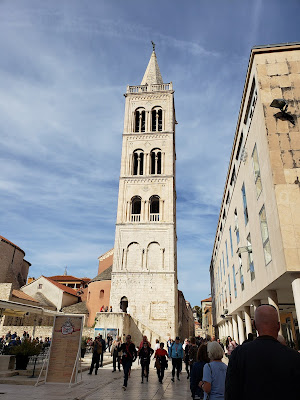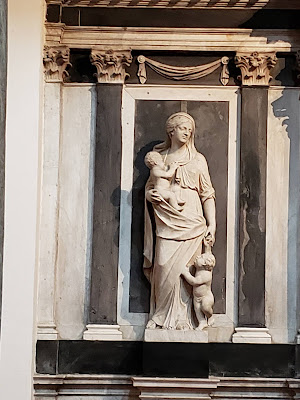| The Cathedral of St. Anastasia was built in the 12th and 13th centuries, upon an older building from the 9th and 11th centuries, and which was erected on the site of an Early Christian Basilica, so the Cathedral’s first stages date as early as the 4th and 5th centuries. The Basilica was dedicated to St Peter the Apostle, but when the Zadar bishop Donat got the relics of the Sirmian martyr St Anastasia, in Zadar known as Stošija, at the beginning of the 9th century, the Basilica was named after her. The cathedral has a richly decorated facade and an impressive three-nave interior with the remains of frescoes in the side apses. The cathedral was badly bombed during WWII and has since been reconstructed. |






















No comments:
Post a Comment